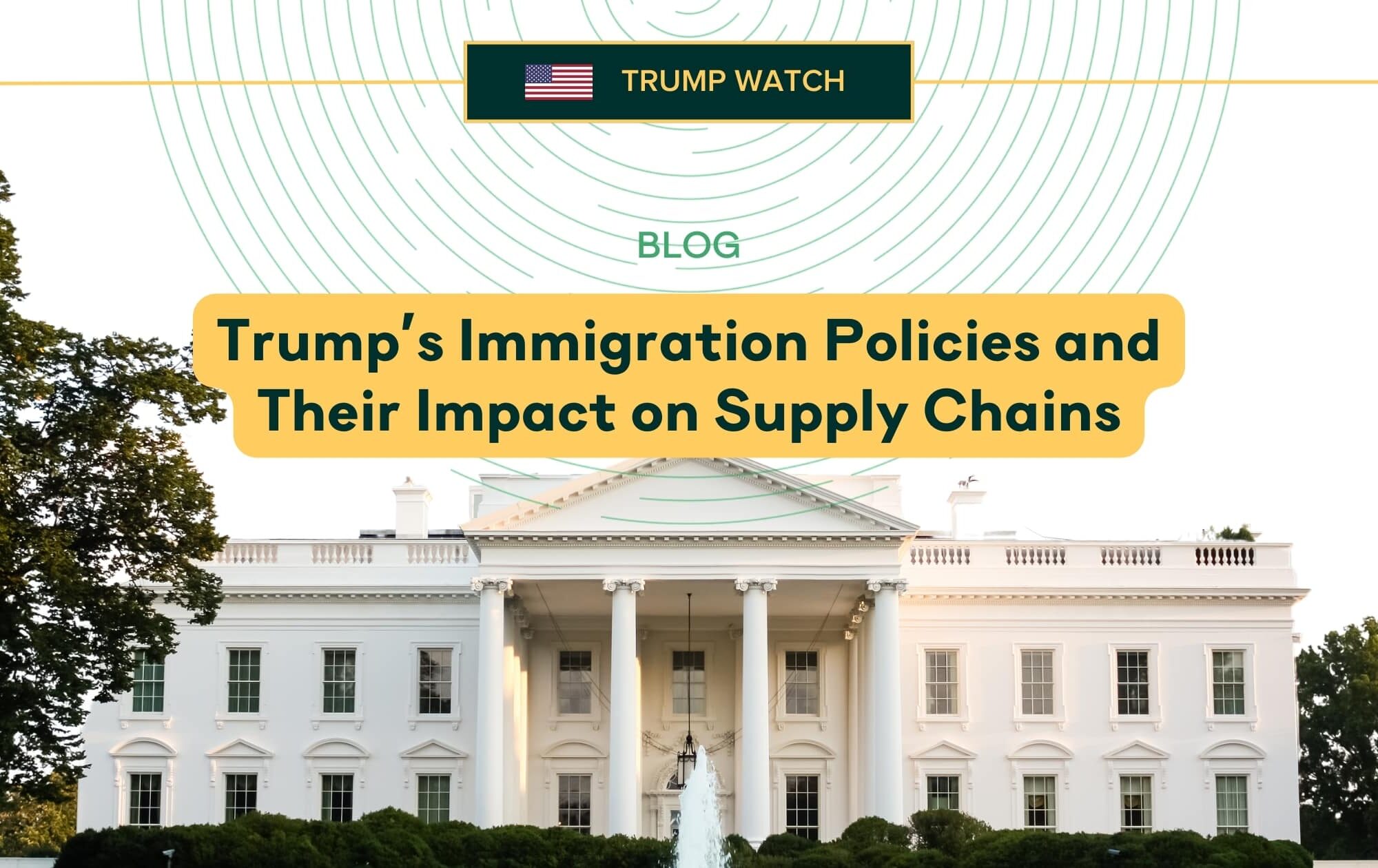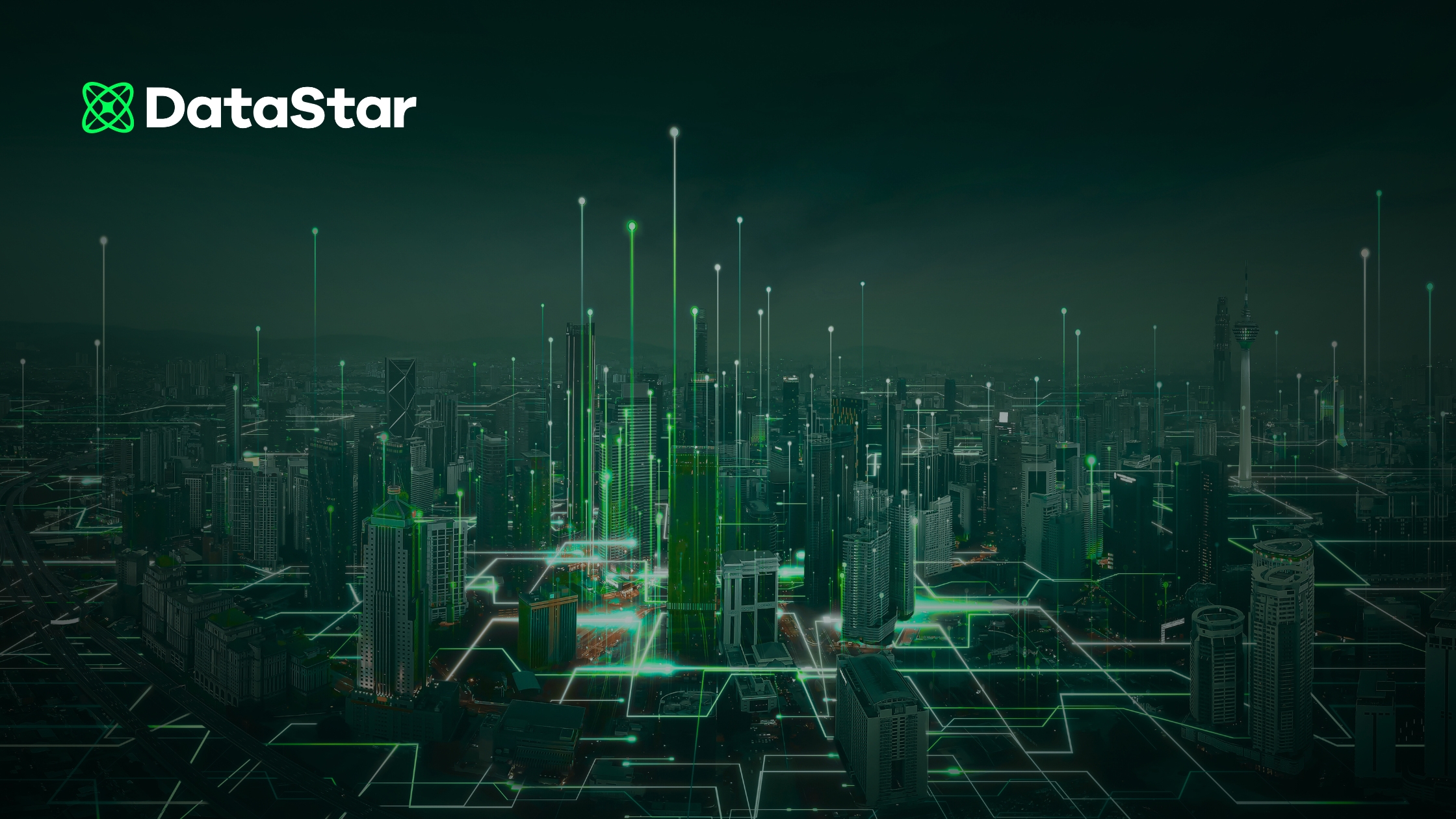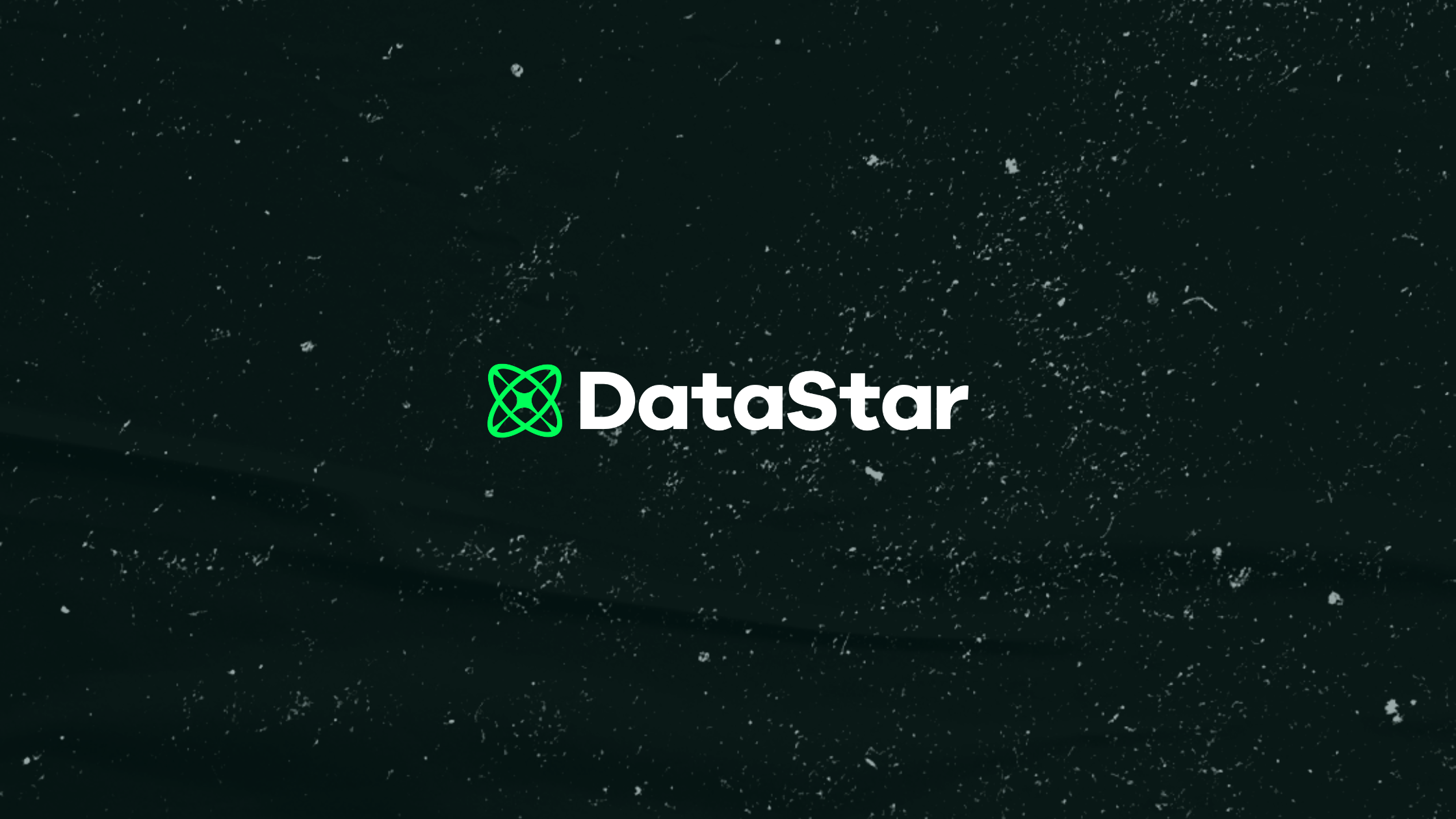
Explore how Trump-era immigration policies challenge supply chains and how businesses can adapt with workforce strategies, automation, and scenario planning.
Published by
Published on
April 8, 2025





With recent policy shifts tightening immigration enforcement, businesses are facing significant challenges yet also uncovering unique opportunities to reimagine their supply chain strategies.
Immigrant workers make up roughly 20% of the overall US workforce (or 29.7 million workers in 2023, according to USAFacts). Industries such as education, construction, retail, and agriculture rely heavily on these workers to maintain operational efficiency and meet consumer demands.
Here’s my perspective on the current state of immigration in the workforce, its implications for supply chain operations, and actionable strategies businesses can adopt to thrive in this evolving environment.
Since taking office in January, Trump has instituted several immigration policy changes which are already taking effect. These include but are not limited to:
Several more actions are already underway or planned.
Immigrant workers play a pivotal role in powering the nation’s workforce. Since 2010, their participation in the labor force has grown from 15.6% to over 20%, showcasing their integral presence across various sectors.

These sectors lean heavily on immigrant workers to sustain basic operations, making any disruption a direct threat to their continuity.
Looking back to the pandemic, labor shortages revealed how dependent supply chains are on consistent workforce availability. Major retailers and fast-food chains like McDonald’s had to increase wages from $10/hour to $15/hour or more just to attract workers. Despite these efforts, labor shortages led to disruptions that cascaded across sectors, exposing vulnerabilities in supply chain operations.
Given the deep reliance on immigrant labor, any policies restricting immigration have an amplified impact across industries, especially within supply chains.
The Trump administration’s immigration policies introduce layers of complexity for businesses. These policies, combined with rising tariffs and calls for increased local production, impose new challenges, including:
Organizations reshoring operations to the U.S. face hurdles finding and retaining workers to staff their facilities. Without sufficient labor, production timelines are delayed, reducing supply chain efficiency while increasing consumer costs. Businesses must increasingly look for technological solutions to bridge these talent gaps.
Ports and transportation hubs are particularly vulnerable to amplified delays due to heightened scrutiny and stricter immigration enforcement. These bottlenecks slow down the movement of goods and require businesses to rethink their logistics and distribution models to avoid punitive costs.
Fewer immigrant workers in agriculture directly impact harvesting and production schedules, resulting in higher operational costs and higher consumer prices. For supply chain leaders in agriculture, nimbleness and creativity are no longer optional but necessary to remain competitive.
New policies also introduce systemic pressures, shifting the dynamics from routine problem-solving to large-scale strategy overhauls. Industries must consider where their supply chain models are most fragile and address those areas before they become disruptors.
While immigration changes pose challenges, they also serve as a catalyst for innovation. Businesses can leverage these shifts to build more resilient and adaptive supply chains. Below are strategies to explore:
With workforce shortages becoming a norm, automation can fill critical gaps in both warehousing and manufacturing. However, implementing automation demands:
Businesses must reassess their supply chain operations to identify vulnerabilities. Key questions to explore include:
Modeling multiple scenarios and prioritizing alternative supply chain pathways will allow operations to remain functional during disruptions.
Rather than depending solely on an existing immigrant workforce, businesses can shift focus toward local talent by:
Join forces with third-party logistics providers or specialized firms that can help manage labor constraints and ensure the flow of goods remains uninterrupted. Collaborating with partners who have deep knowledge of immigration and labor regulations is another way to stay compliant while remaining cost-efficient.
For agricultural businesses, diversifying crop types, investing in automation for repetitive tasks, and managing forecast risks through enhanced data models can stabilize production variability caused by labor gaps.
Supply chains are intricate machines with complex, interconnected parts. Preparing for immigration policy effects requires putting contingency frameworks in place. Leaders should consider the following scenarios:
Where are labor shortages most likely to hit? Are there regions or facilities where dependency on immigrant labor is highest?
With labor shortages impacting certain regions disproportionately, which supply chain channels or networks should businesses prioritize?
Where does technology fit? Will the costs of automation justify the returns over time?
Developing thoughtful answers to these questions ensures greater preparedness and enables proactive problem-solving rather than reactive measures.
With the rapid-fire changes instituted by the Trump administration including tariff policies, energy changes, immigration restrictions, figuring out how your supply chain should respond can be overwhelming.
Good news: you’re not “stuck” with an inefficient, rigid supply chain–reimagine it with Optilogic supply chain design. Create digital models of the current supply chain and analyze trade-offs. Then, make designs reality with tailored decision-making apps for business users. Watch the 5-minute demo to learn more.
With recent policy shifts tightening immigration enforcement, businesses are facing significant challenges yet also uncovering unique opportunities to reimagine their supply chain strategies.
Immigrant workers make up roughly 20% of the overall US workforce (or 29.7 million workers in 2023, according to USAFacts). Industries such as education, construction, retail, and agriculture rely heavily on these workers to maintain operational efficiency and meet consumer demands.
Here’s my perspective on the current state of immigration in the workforce, its implications for supply chain operations, and actionable strategies businesses can adopt to thrive in this evolving environment.
Since taking office in January, Trump has instituted several immigration policy changes which are already taking effect. These include but are not limited to:
Several more actions are already underway or planned.
Immigrant workers play a pivotal role in powering the nation’s workforce. Since 2010, their participation in the labor force has grown from 15.6% to over 20%, showcasing their integral presence across various sectors.

These sectors lean heavily on immigrant workers to sustain basic operations, making any disruption a direct threat to their continuity.
Looking back to the pandemic, labor shortages revealed how dependent supply chains are on consistent workforce availability. Major retailers and fast-food chains like McDonald’s had to increase wages from $10/hour to $15/hour or more just to attract workers. Despite these efforts, labor shortages led to disruptions that cascaded across sectors, exposing vulnerabilities in supply chain operations.
Given the deep reliance on immigrant labor, any policies restricting immigration have an amplified impact across industries, especially within supply chains.
The Trump administration’s immigration policies introduce layers of complexity for businesses. These policies, combined with rising tariffs and calls for increased local production, impose new challenges, including:
Organizations reshoring operations to the U.S. face hurdles finding and retaining workers to staff their facilities. Without sufficient labor, production timelines are delayed, reducing supply chain efficiency while increasing consumer costs. Businesses must increasingly look for technological solutions to bridge these talent gaps.
Ports and transportation hubs are particularly vulnerable to amplified delays due to heightened scrutiny and stricter immigration enforcement. These bottlenecks slow down the movement of goods and require businesses to rethink their logistics and distribution models to avoid punitive costs.
Fewer immigrant workers in agriculture directly impact harvesting and production schedules, resulting in higher operational costs and higher consumer prices. For supply chain leaders in agriculture, nimbleness and creativity are no longer optional but necessary to remain competitive.
New policies also introduce systemic pressures, shifting the dynamics from routine problem-solving to large-scale strategy overhauls. Industries must consider where their supply chain models are most fragile and address those areas before they become disruptors.
While immigration changes pose challenges, they also serve as a catalyst for innovation. Businesses can leverage these shifts to build more resilient and adaptive supply chains. Below are strategies to explore:
With workforce shortages becoming a norm, automation can fill critical gaps in both warehousing and manufacturing. However, implementing automation demands:
Businesses must reassess their supply chain operations to identify vulnerabilities. Key questions to explore include:
Modeling multiple scenarios and prioritizing alternative supply chain pathways will allow operations to remain functional during disruptions.
Rather than depending solely on an existing immigrant workforce, businesses can shift focus toward local talent by:
Join forces with third-party logistics providers or specialized firms that can help manage labor constraints and ensure the flow of goods remains uninterrupted. Collaborating with partners who have deep knowledge of immigration and labor regulations is another way to stay compliant while remaining cost-efficient.
For agricultural businesses, diversifying crop types, investing in automation for repetitive tasks, and managing forecast risks through enhanced data models can stabilize production variability caused by labor gaps.
Supply chains are intricate machines with complex, interconnected parts. Preparing for immigration policy effects requires putting contingency frameworks in place. Leaders should consider the following scenarios:
Where are labor shortages most likely to hit? Are there regions or facilities where dependency on immigrant labor is highest?
With labor shortages impacting certain regions disproportionately, which supply chain channels or networks should businesses prioritize?
Where does technology fit? Will the costs of automation justify the returns over time?
Developing thoughtful answers to these questions ensures greater preparedness and enables proactive problem-solving rather than reactive measures.
With the rapid-fire changes instituted by the Trump administration including tariff policies, energy changes, immigration restrictions, figuring out how your supply chain should respond can be overwhelming.
Good news: you’re not “stuck” with an inefficient, rigid supply chain–reimagine it with Optilogic supply chain design. Create digital models of the current supply chain and analyze trade-offs. Then, make designs reality with tailored decision-making apps for business users. Watch the 5-minute demo to learn more.
Fill out the form to unlock the full content

.png)

.png)
